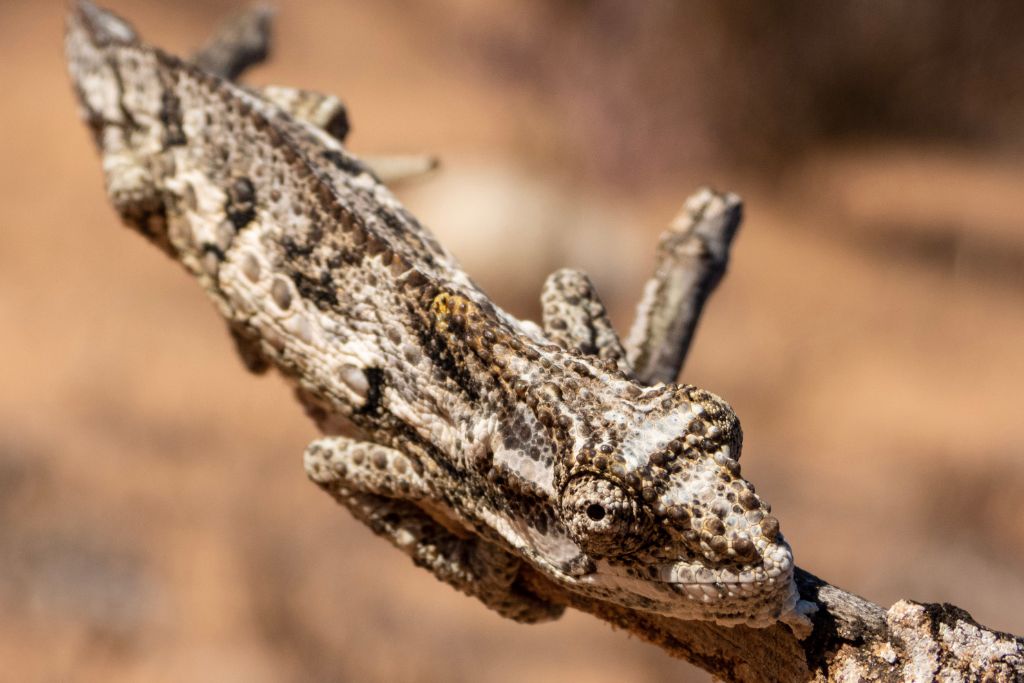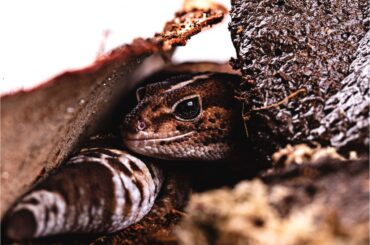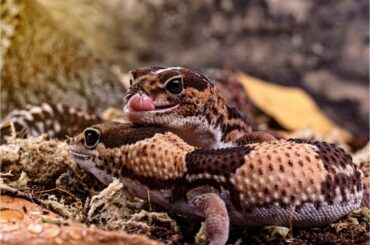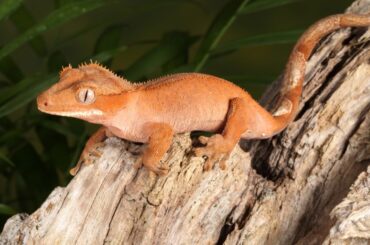Have you ever wondered how leopard geckos sleep? What makes their sleeping habits so unique?
Leopard geckos have some distinct ways of resting. Knowing how they sleep is not just a curiosity; it’s essential for their overall health and behavior.
Different aspects of their sleep patterns are intriguing. There’s much to explore from the positions they choose to how their eyes behave during sleep. Learning about these patterns can help pet owners and enthusiasts provide better care and gain a deeper understanding of these amazing reptiles.
Leopard Gecko Sleeping Positions
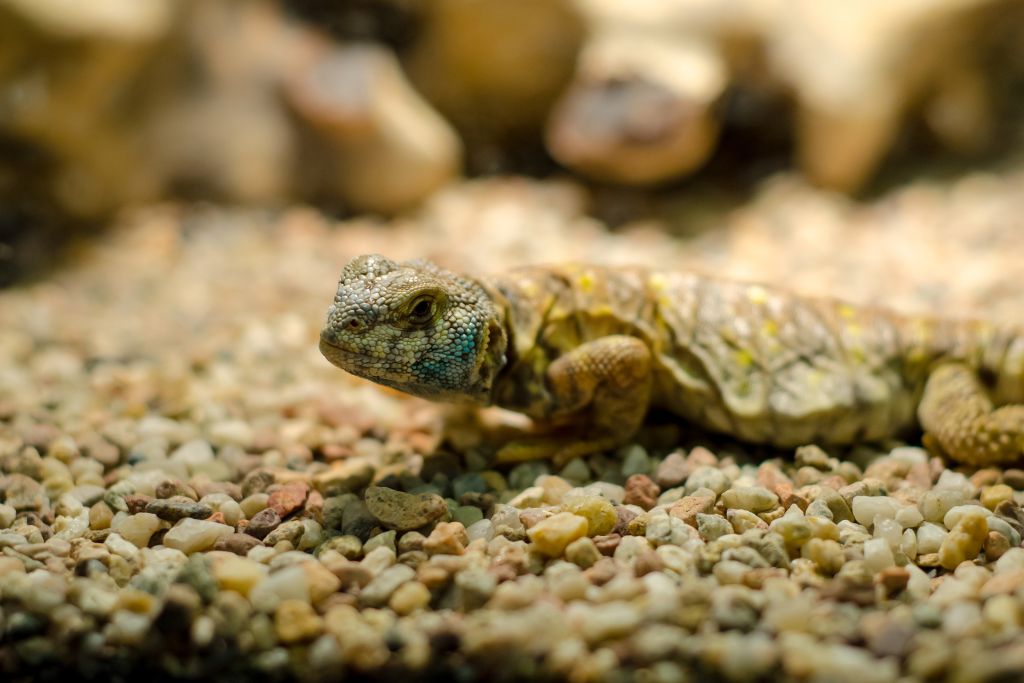
Leopard geckos sleep in some pretty cool ways! Each position they choose can tell us something about them. Let’s dive into the different sleeping positions and see what they mean.
Curled-Up Tail
When the leopard gecko curls its tail around its body while sleeping, it’s doing more than just getting comfortable. This unique position helps keep the gecko warm, especially during cooler nights.
Additionally, the gecko might protect it from harm or damage by curling its sensitive tail close to its body. Understanding this sleeping position gives us insight into the gecko’s needs and how it takes care of itself even while resting.
Upside Down
Sleeping upside down and clinging to a surface is more than just an unusual way for the leopard gecko to rest. This position might be a clever way for the gecko to feel safe from predators. By choosing such an unexpected place to sleep, it can keep itself out of harm’s way and enjoy a peaceful rest.
One Eye Open
When the leopard gecko sleeps with one eye open and the other closed, it stays alert to its surroundings while resting. This unique behavior allows the gecko to look for potential threats. It’s a smart way to ensure safety, showing how the gecko adapts to its environment even during sleep.
Hiding Under Objects
The habit of hiding under rocks or other objects to sleep is more than just a preference for the leopard gecko. This position provides safety and comfort, making the gecko feel secure in its environment. The gecko can rest without worry by choosing a hidden spot, knowing it’s protected from potential dangers.
Stretched Out
When the leopard gecko stretches its body and legs out fully while sleeping, it expresses a sense of safety and contentment in its environment. This relaxed position might indicate that the gecko feels at ease and has no fear of threats. Observing this sleeping position helps us understand the gecko’s comfort level and how it perceives its surroundings.
| Sleeping Position | Description | Purpose/Behavioral Insight |
| Curled-Up Tail | Tail curled around its body for warmth and protection. | Provides warmth and protection; insight into self-care while resting. |
| Upside Down | Sleep upside down for safety. | Uses unexpected places for rest to avoid predators. |
| One Eye Open | Sleep with one eye open. | Adapts to its environment even during sleep; built-in security system, staying alert to surroundings. |
| Hiding Under Objects | Hides under objects. | Chooses hidden spots for security; rests without worry. |
| Stretched Out | Stretches body out. | Indicates comfort and ease; absence of fear of threats. |
Do Leopard Geckos Sleep with Their Eyes Open?
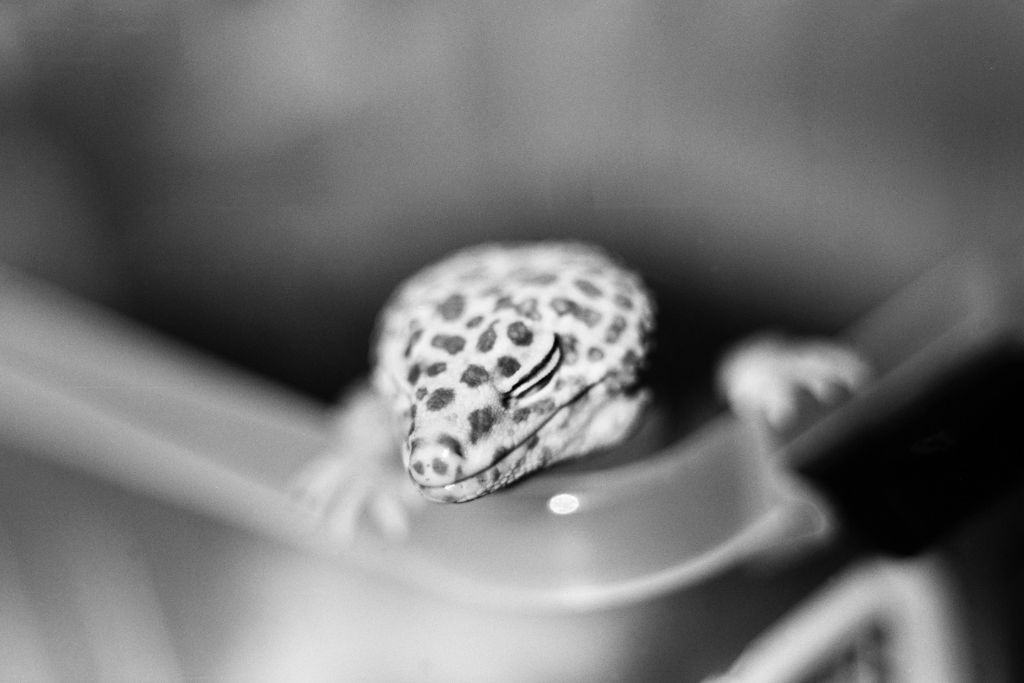
Can leopard geckos sleep with their eyes open? Many people ask this fascinating question. And the answer is: yes, they can! Observers have seen some leopard geckos sleeping with one eye open. This unique behavior lets them keep an eye on their surroundings while resting.
Scientists and reptile enthusiasts have studied this intriguing habit. Researchers have discovered that leopard geckos can sleep with one eye open to stay alert to potential threats. This ability is like having a built-in security system that helps them feel safe. Understanding these factors is an excellent way to connect with these amazing creatures!
How Long Do Leopard Geckos Sleep?
Leopard geckos love to sleep, but how long do they nap? They usually sleep around 12 hours a day in captivity. In the wild, their sleep might vary more. Where they live and what’s happening around them can influence their sleeping time.
Temperature, age, and health can also change a leopard gecko’s sleep pattern. When it’s cooler, they might sleep longer to conserve energy. Just like human kids, younger geckos often need more sleep! A gecko’s health can also change its sleep pattern.
No one-size-fits-all answer exists for how long leopard geckos sleep. A mix of different things makes each gecko’s sleep unique. Understanding these factors helps us take better care of them and ensure they get the rest they need. Whether in the wild or at home as a pet, knowing about their sleep helps us connect with these fascinating creatures.
The Nocturnal Nature of Leopard Geckos
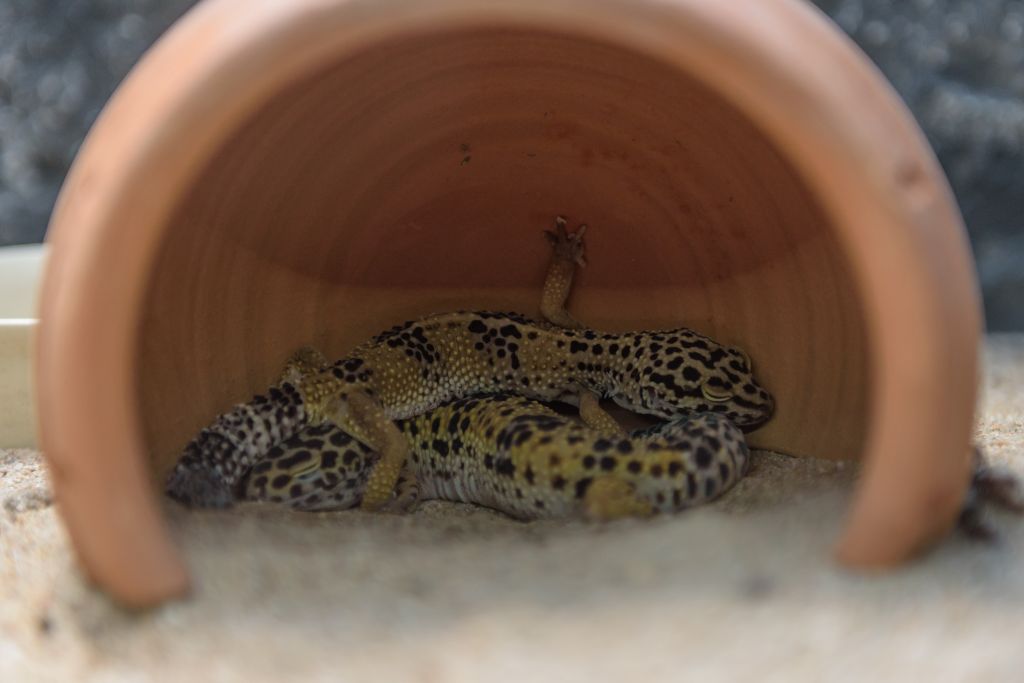
Leopard geckos are night owls, or in other words, they’re nocturnal. They are most active when the sun goes down. Let’s explore what makes their nocturnal nature unique and how it shapes their behavior.
Nighttime Hunting
Leopard geckos are skilled nighttime hunters. They search for food mainly at night when the darkness helps them sneak up on insects and other prey. Hunting in the dark makes it easier for them to catch their meals, showing how their nocturnal nature plays a vital role in their survival.
Cooler Temperatures
These fascinating creatures prefer to be active during the cooler nighttime hours. The lower temperatures at night are more comfortable for them, allowing them to move around without getting too hot. This preference for cooler temperatures is another way their nocturnal behavior shapes their daily life.
Avoiding Predators
Staying active at night helps leopard geckos avoid daytime predators. Many animals that might want to eat them are asleep at night, so it’s safer for geckos to be out and about. This strategy of avoiding predators is a smart adaptation that keeps them safe.
Specialized Eyes
Leopard geckos have eyes that are adapted to see well in low light. This extraordinary ability helps them navigate and find food in the dark, giving them an advantage as nocturnal creatures. Their specialized eyes perfectly show how they’ve evolved to thrive in their nighttime world.
Factors Affecting Leopard Gecko Sleep
Leopard geckos need their sleep, just like we do. But did you know that certain things can change how they sleep? Let’s look at some factors that might disrupt or influence their sleep.
Temperature Changes
Sudden temperature changes can affect a leopard gecko’s sleep. The gecko might wake up and feel uncomfortable if it gets too hot or too cold. They need the right temperature to have a good night’s sleep, so keeping their environment stable helps them rest better.
Noises and Disturbances
Loud noises or sudden movements can startle a sleeping gecko. Imagine if someone turned on loud music while you were trying to sleep! Leopard geckos need a calm and quiet place to rest, so keeping their area peaceful helps them sleep soundly.
Health Issues
A leopard gecko might have trouble sleeping if it isn’t feeling well. Sickness or injury can make getting comfortable hard. Taking good care of their health and watching for signs of trouble can ensure they get the rest they need.
Conclusion
Leopard geckos need a good night’s sleep to be as healthy as possible. By paying close attention to how they sleep and meeting their specific needs, we give these scaly friends the best chance to live extraordinary lives.
FAQs
Do Leopard Geckos Sleep a Lot?
Yes, leopard geckos usually sleep around 12 hours a day. Their sleep can vary depending on factors like temperature and health.
How Do I Know If My Gecko is Sleeping?
You can tell if your gecko is sleeping by observing its position and behavior. If it’s in a typical sleeping position and not moving much, it’s likely asleep.
Do Geckos Close Their Eyes When They Sleep?
Leopard geckos often sleep with their eyes open or partially open. They have the unique ability to sleep with one eye open to stay alert to their surroundings.

